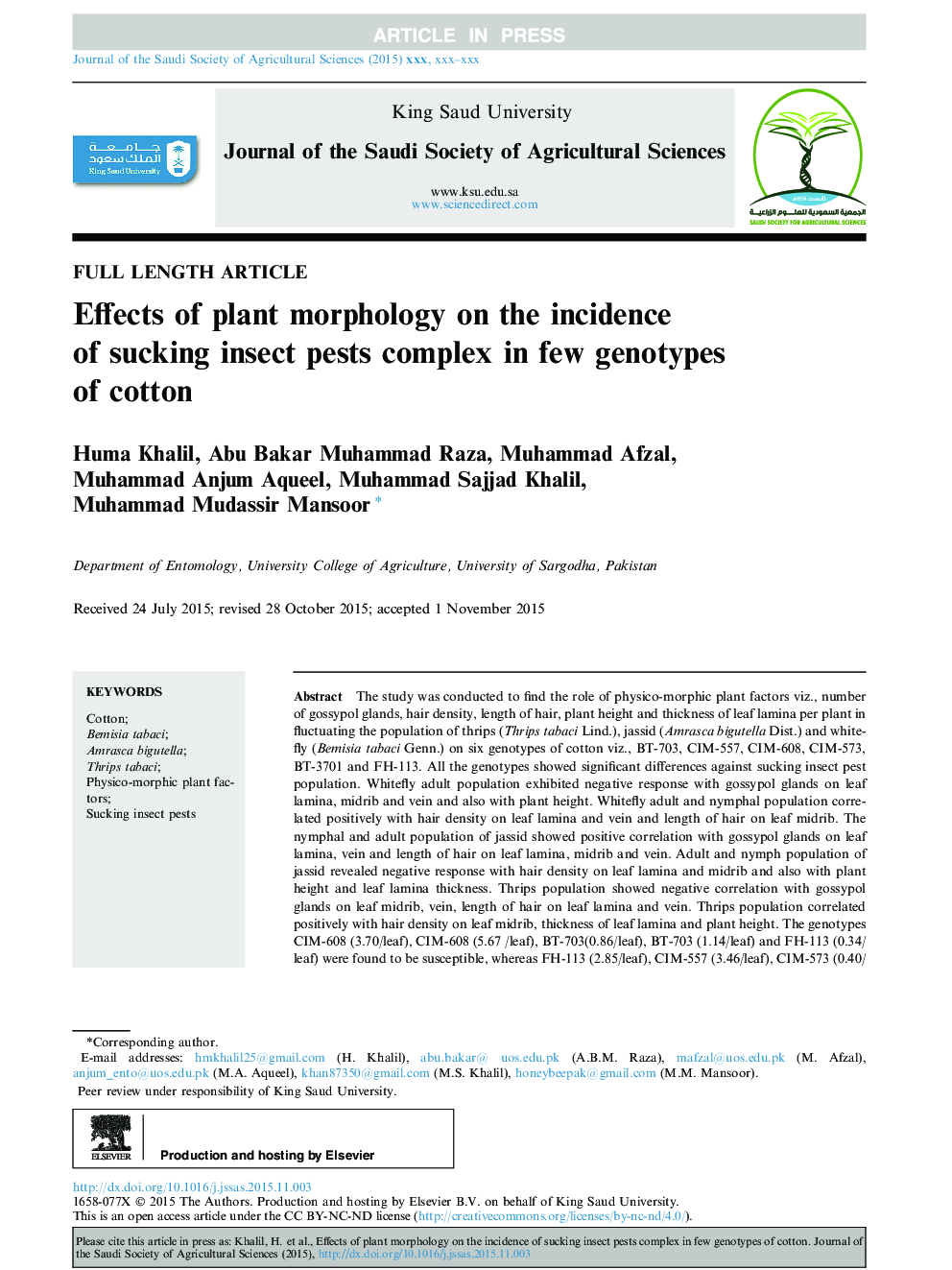| Article ID | Journal | Published Year | Pages | File Type |
|---|---|---|---|---|
| 8876363 | Journal of the Saudi Society of Agricultural Sciences | 2017 | 6 Pages |
Abstract
The study was conducted to find the role of physico-morphic plant factors viz., number of gossypol glands, hair density, length of hair, plant height and thickness of leaf lamina per plant in fluctuating the population of thrips (Thrips tabaci Lind.), jassid (Amrasca bigutella Dist.) and whitefly (Bemisia tabaci Genn.) on six genotypes of cotton viz., BT-703, CIM-557, CIM-608, CIM-573, BT-3701 and FH-113. All the genotypes showed significant differences against sucking insect pest population. Whitefly adult population exhibited negative response with gossypol glands on leaf lamina, midrib and vein and also with plant height. Whitefly adult and nymphal population correlated positively with hair density on leaf lamina and vein and length of hair on leaf midrib. The nymphal and adult population of jassid showed positive correlation with gossypol glands on leaf lamina, vein and length of hair on leaf lamina, midrib and vein. Adult and nymph population of jassid revealed negative response with hair density on leaf lamina and midrib and also with plant height and leaf lamina thickness. Thrips population showed negative correlation with gossypol glands on leaf midrib, vein, length of hair on leaf lamina and vein. Thrips population correlated positively with hair density on leaf midrib, thickness of leaf lamina and plant height. The genotypes CIM-608 (3.70/leaf), CIM-608 (5.67 /leaf), BT-703(0.86/leaf), BT-703 (1.14/leaf) and FH-113 (0.34/leaf) were found to be susceptible, whereas FH-113 (2.85/leaf), CIM-557 (3.46/leaf), CIM-573 (0.40/leaf), CIM-557 (0.48/leaf) and BT-703 (0.08/leaf) were resistant to whitefly adult, whitefly nymph, jassid adult, jassid nymph and thrips population respectively.
Keywords
Related Topics
Life Sciences
Agricultural and Biological Sciences
Agricultural and Biological Sciences (General)
Authors
Huma Khalil, Abu Bakar Muhammad Raza, Muhammad Afzal, Muhammad Anjum Aqueel, Muhammad Sajjad Khalil, Muhammad Mudassir Mansoor,
